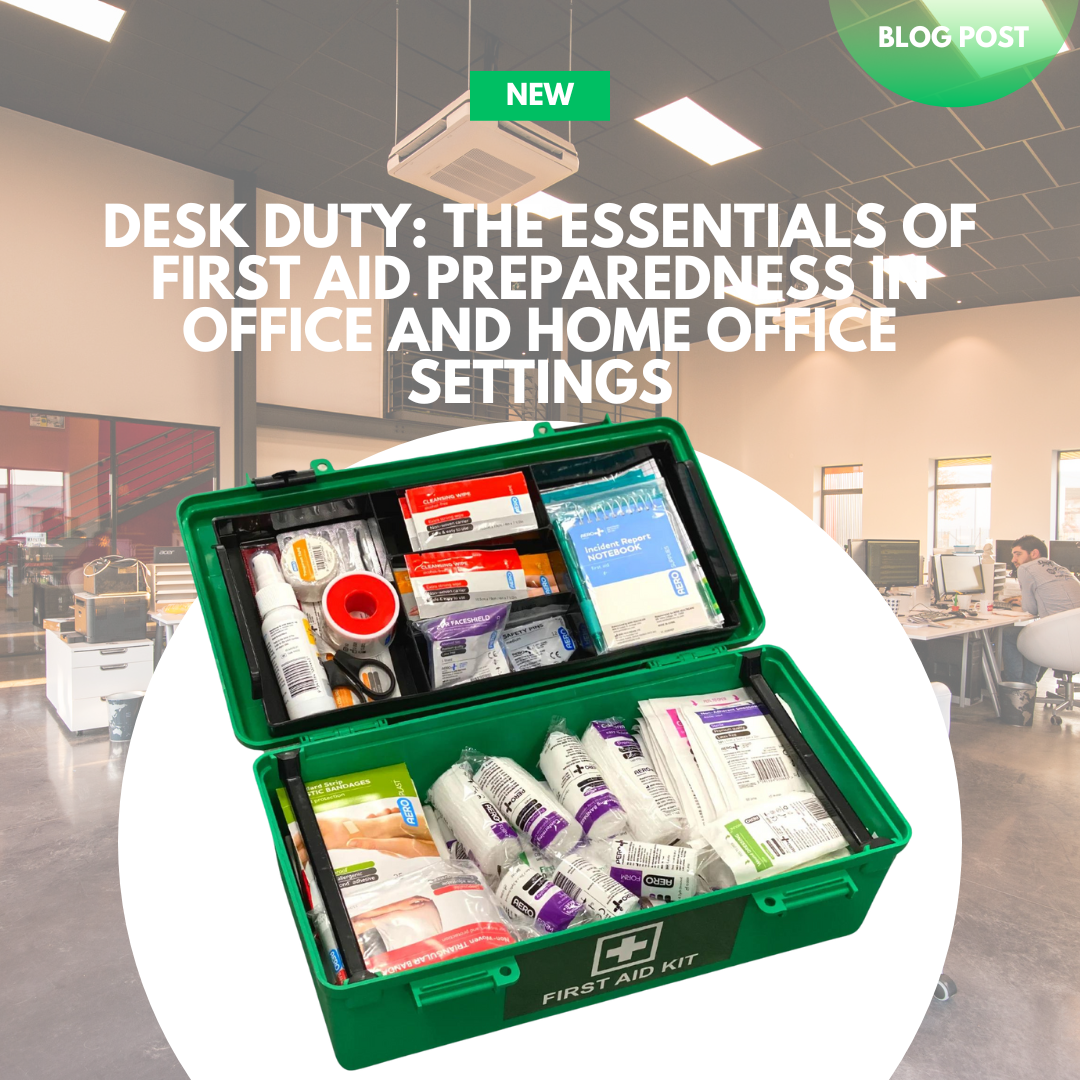FREE FREIGHT AUSTRALIA WIDE FOR ORDERS OVER $200

Desk Duty: The Essentials of First Aid Preparedness in Office and Home Office Settings
While the office may seem like a low-risk environment compared to construction sites or hospitality venues, accidents and health issues can and do occur. From paper cuts to chronic strain injuries, the risks in an office setting are often underestimated. With the rise of remote work, ensuring first aid preparedness extends from the traditional office to the home office as well.

Crafting a Comprehensive Office First Aid Kit
An office first aid kit should cater to the common injuries and health issues that can arise in both traditional and home office settings. Here's what it should include:
- Bandages and Plasters: For covering minor cuts and abrasions.
- Antiseptic Wipes and Cream: To clean wounds and prevent infection.
- Eyewash Solution: Long hours in front of a screen can lead to eye strain and irritation. An eyewash solution can help relieve discomfort.
- Pain Relief Medication: Over-the-counter medications can manage headaches, muscle pain, and menstrual cramps.
- Compression Wraps: For sprains or strains, especially useful in environments where you might not move around as much.
- Ergonomic Support Items: Wrist rests and lumbar supports can prevent strain injuries and should be considered part of first aid readiness.
Ergonomic Adjustments for Prevention
Preventing injuries is just as important as being prepared to treat them. Ergonomic adjustments can significantly reduce the risk of strain and repetitive injury:
- Monitor Height and Distance: Ensure the top of your monitor is at or just below eye level and about an arm's length away to reduce eye strain and neck pain.
- Chair and Desk Height: Adjust your chair and desk so your feet can rest flat on the floor or on a footrest, with your thighs parallel to the floor. Your elbows should be at a 90-degree angle when typing.
- Keyboard and Mouse Placement: Keep your keyboard and mouse close to prevent reaching, which can strain your shoulders and arms.

First aid readiness in office and home office settings goes beyond having a kit for physical injuries; it encompasses ergonomic practices and mental health support. By equipping these environments with the necessary tools and knowledge, businesses and individuals can create a safer and more supportive workspace. This holistic approach not only addresses immediate health concerns but also contributes to long-term well-being, productivity, and a positive work culture. Remember, a healthy workspace is a productive workspace. Let's prioritize health and safety, no matter where our office might be.
